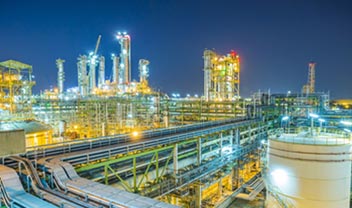According to forecasts, AI investments in the global aviation market are expected to reach a $2,222.5 million by 2025, demonstrating a CAGR of 46.65% in the period between 2018 and 2025. This trend is fast disrupting how the players approach their data streams, operations, and customer-centricity goals. Interestingly, we can already witness certain AI-specific use cases in aviation which include baggage-check in, client inquiries, plane fuel enhancement, and facial recognition. You may wonder why the players are taking resort to AI for facial recognition — for faster boarding. Kiosks for facial recognition cut down on boarding time, resulting in greater convenience and a higher number of satisfied travelers.
Why do airlines need to board the AI bandwagon?
However, achieving high customer satisfaction levels may become more challenging as airline traffic doubles up to almost eight billion in the next two decades. Most airlines may struggle to keep pace with consumer demand. Reasons for the robust demand have been identified as strong economic growth, a growing middle class, and increased spending on services. Here too AI has a crucial role to play.
With the high proliferation of data, as the airlines collect a vast amount of customer preference info, scheduling history, and employee information, developing practical AI solutions becomes easier. Airlines use the data sets and advanced AI-algorithms to offer superior personalized services to a larger consumer base and improve employee incentives, ensuring that services do not deteriorate despite rising consumer demand.
Changes we can witness already
While the traffic is all set to increase, the competition too will heighten. In such a scenario, AI is being leveraged by the aviation industry for autopilot systems, which assists the pilot in controlling the plane better. They reduce repetitive tasks of the pilots, manage turbulence and help in weather forecasts determining whether it is safe to fly. In case of adverse weather, AI engines suggest alternate routes.
Although auto-pilot remains the most successful use case of AI, the use of the technology stretches beyond auto-pilot in multiple ways:
- AI disentangles the procedure related to baggage screening in a few airports. Osaka Airport has introduced an AI platform—Syntech One 200, which screens the baggage for multiple passenger lanes saving on resources and time. This AI software can also detect knives, threats, and weapons both ensuring and bolstering security.
- Also, AI-based virtual assistants are being used to improve client services. These assistants answer basic queries allowing the customer service personnel adequate time to take care of more pressing issues. A leading airline is already using Alexa to answer common customer queries such as the status of a trip, check-in request, and whether wi-fi is accessible on a new flight.
- AI helps detect booking-related problems. It analyses past flyer information, historical data and monitors the weather to predict which passengers will not show up or may swap to another flight. It provides the ground staff with up-to-date information on the number of people likely to board the flight.
Use of AI in fleet and operations management
Besides the above use cases, AI also finds use in enhancing the fleet and operations management. The Alibaba Group recently announced that it has provided AI-based solutions to the Beijing airport where they are using it to help pilots find parking easily. This AI-system gauges congestion, facilitates flight route optimization, and analyses real-time data to detect delays.
It would surprise you that besides flight route optimization, fraud detection in aviation is another area where AI finds use. Advanced algorithms analyze a customer’s flight and purchase pattern to detect fraudulent credit card transactions, which saves airlines millions of dollars, eventually.
Enhancing customer service for retention
While fleet and operations management is being well tackled, AI engines also contribute majorly to customer service. It is for this reason that 52% of airlines have thought of implementing AI initiatives in their customer service operations in the next five years. The AI engines adopt behavior tracking techniques and keep track of purchase history to make personalized offerings. Intelligent systems carry out sentiment analysis, evaluating real-time customer reactions to provide actionable insights on how to improve pre-flight, in-flight, and post-flight service.
Monitoring the “health” of aircraft
Another interesting area where AI finds use is predictive maintenance. Airlines are fast embracing AI to monitor the “health” of aircraft. AI systems predict when a part requires maintenance, ensuring repairs without delay. Data is fast analyzed, which enables timely preventive actions. They use AI systems on valves, generators and brakes which extend the lives of the parts and minimize disruptions.
In case you are wondering how predictive maintenance is carried out—AI systems make use of Natural Language Processing (NLP) to scan maintenance logs, predict failure, and recommend fixes. This saves the maintenance costs of airlines and also keeps passengers safe. Interestingly, this upgrade to AI has led to a significant reduction in flight delays owing to malfunctions.
Making the skies friendlier in future
Till now, we discussed how AI is bringing about changes, but what lies in store for the future? AI promises to ensure a reduction in the number of bags lost in a unique way. Using AI, intelligent machines will enable bags to be autonomously managed from the moment a passenger checks-in to when it arrives at the destination — all without human intervention.
Besides, interesting research is underway in using Fitbit biometric data inflight to offer better customer care during the journey based on body temperature and heart rate. And, what more could we ask for, convenience, comfort, and now inflight care based on biometrics.
As airlines embrace AI, it is us the end customers who will undeniably stand to benefit the most.













